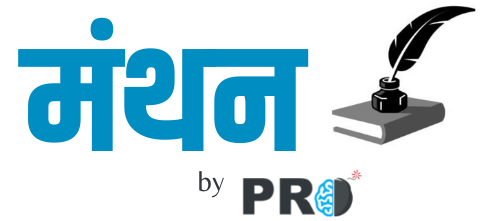- Harshada Gadekar

India's urban population has been gradually increasing, which has resulted in a rise in the
number of urban constituencies. Voters in these communities can be a mixture of middle-class,
wealthy, and lower-class, frequently more varied.
A total of 158 cities across India participated in the celebration of the greatest democracy in the
world. Details split is as follows: In the 1st phase there were 22 cities, In the 2nd phase 24 cities,
In the 3rd phase 28 cities, In the 4th phase 40 cities, In the 5th phase 14 cities and In The 6th and
7th phases there were 15 cities each polling for the Lok Sabha election 2024.
Out of a total of 43 cities in Maharashtra, 23 cities from Maharashtra polled for this Lok Sabha election such as Mumbai, Bhiwandi, Thane, Kalyan, Vasai-Virar, Pune, Baramati, Nagpur,
Nashik, Chh. Sambhaji Nagar, Solapur, Amravati, Nanded-Waghala, Kolhapur, Akola, Sangli,
Jalgaon, Latur, Dhule, Ahmednagar, Chandrapur, Parbhani, Jalna.
The Congress-led United Progressive Alliance regained power in 2009 because of stellar
performance in urban centers. This happened despite the UPA's seemingly pro-rural rhetoric,
with schemes such as Bharat Nirman, farm loan waiver and rural employment guarantee scheme.
Although urban areas have fewer constituencies than rural areas, they have a dense population
and high voter turnout in major centres. Winning important urban seats can provide a major
advantage. It is true that, according to the 2019 Lok Sabha elections, just 18% of voters and 89
out of 543, or roughly 16.4%, of the Lok Sabha seats are truly urban (the definition of an urban
constituency). But the factors such as vote share where urban vote share is higher than the
National vote share for both the dominant parties BJP and Congress. For BJP, In 2014 38%
Urban 31% National and In 2009 23.6% Urban and 18.8% National even for Congress urban
vote share is similar to its national vote share i.e. In 2014 19.2% Urban 19.3% National and In
2009 30.2% Urban and 28.55% National vote share. Also, there is an increasing voting turnout from
53% in 2009 to 62% in 2014.
Voters in urban areas are more concerned with issues related to public transportation, housing,
jobs, peace and order, education, and the environment. Issues which have attracted urban voters'
attention for Lok Sabha 2024 election are the New Education Policy and its real-time effect, women's
sexual harassment incidence like Unnao, Hathras, Manipur etc, even urban voters have observed
unnecessary traffic jams and conjunction due to political rallies and campaigns, development of
bridges and roads including Atal Setu, trans harbour link, condition of Sports, Art, Tourism in
India, Defection of Politicians and Loyalty to their party or Agenda's or People's will. They
frequently react to pledges of improved urban government, anti-corruption initiatives, and
economic improvements.
Caste and local politics have less impact on urban voters, who are typically more erratic.
Voting on the basis of performance, policy, and ideological inclinations is more likely. Urban
areas frequently serve as swing areas where voters are more swayed by recent performance and
particular issues rather than being as devoted to one party.
Urban voters are more likely to be influenced by social media campaigns, online news sources,
and digital political advertising. Access to different types of mediums of media is a double-edged sword
knife in the case of urban voters. Due to their increased access to digital media, their opinions are
significantly shaped by the media.
We can clearly see how the major political parties in India that are 'The National Democratic Alliance
(NDA)' led by BJP and its main opposition 'The Indian National Developmental Inclusive
Alliance (INDIA)' led by Congress are using social media to influence Urban and rural voters
by tackling different issues for both the voters. For example, the BJP had an advertisement saying
their government has successfully given money for the crop insurance Scheme directly in the
bank accounts of farmers which are actually rural voters and another advertisement saying BJP
has built bridges, and roads across India catering to transportation concerns of urban voters. First BJP
started with digital campaigns but as an urban youth, I can clearly see that now even opposition is
in the field of digital war.
Recent elections have shown an evident shift in rural voters' preferences, with rural people being
more swayed by national problems and leadership. This was seen in the Lok Sabha elections of
2014 and 2019 when the Bharatiya Janata Party (BJP) was able to garner a sizable amount of
support from rural voters. On the other hand, urban voters have demonstrated an ability to back
political parties that pledge growth in the economy. Urban voters have come together in support
of a party that promises clean administration and local development, as evidenced by the growth
of the Aam Aadmi Party (AAP) in Delhi.
Political parties' comprehensive electoral strategies are frequently shaped by the interactions
between urban and rural voters. The ability to successfully meet and balance the various
demands and concerns of both urban and rural voters is a prerequisite for success for both parties
and candidates. Gaining an understanding of this dynamic is essential for winning elections in
India's complicated political system.


No comments:
Post a Comment